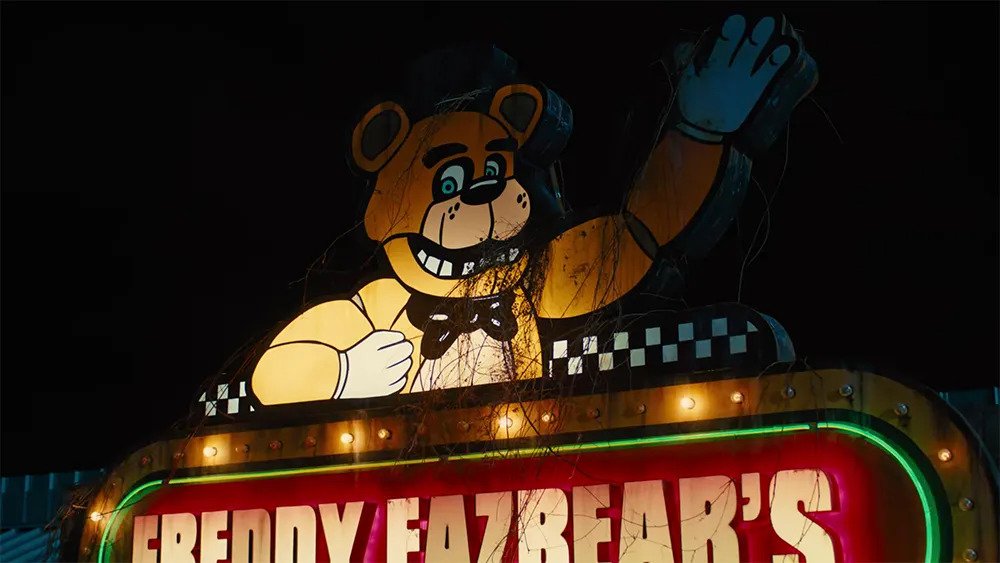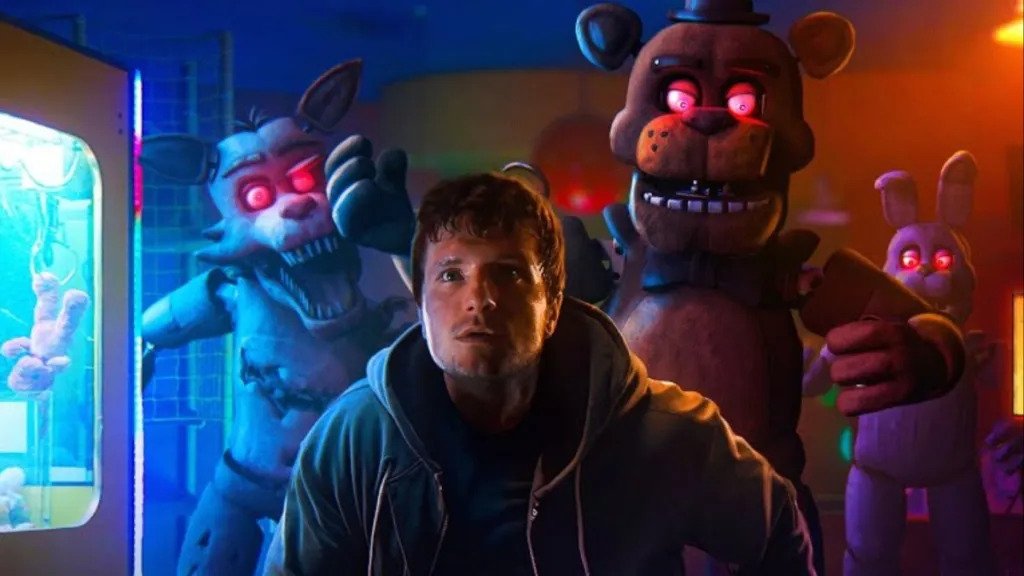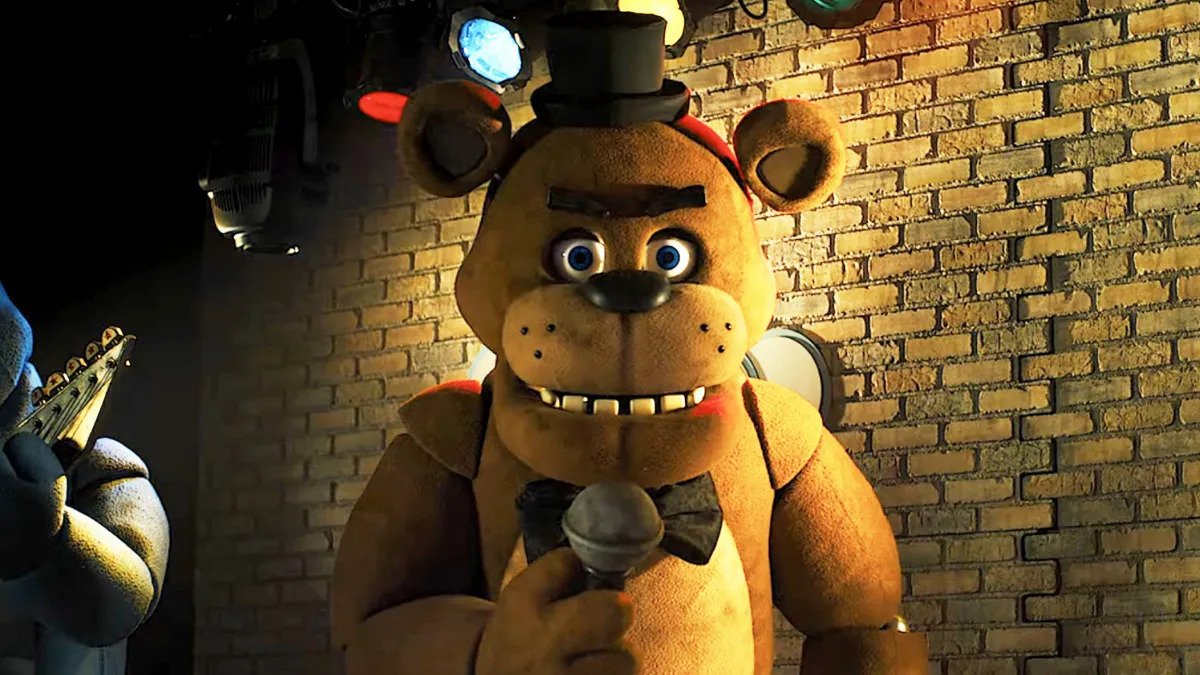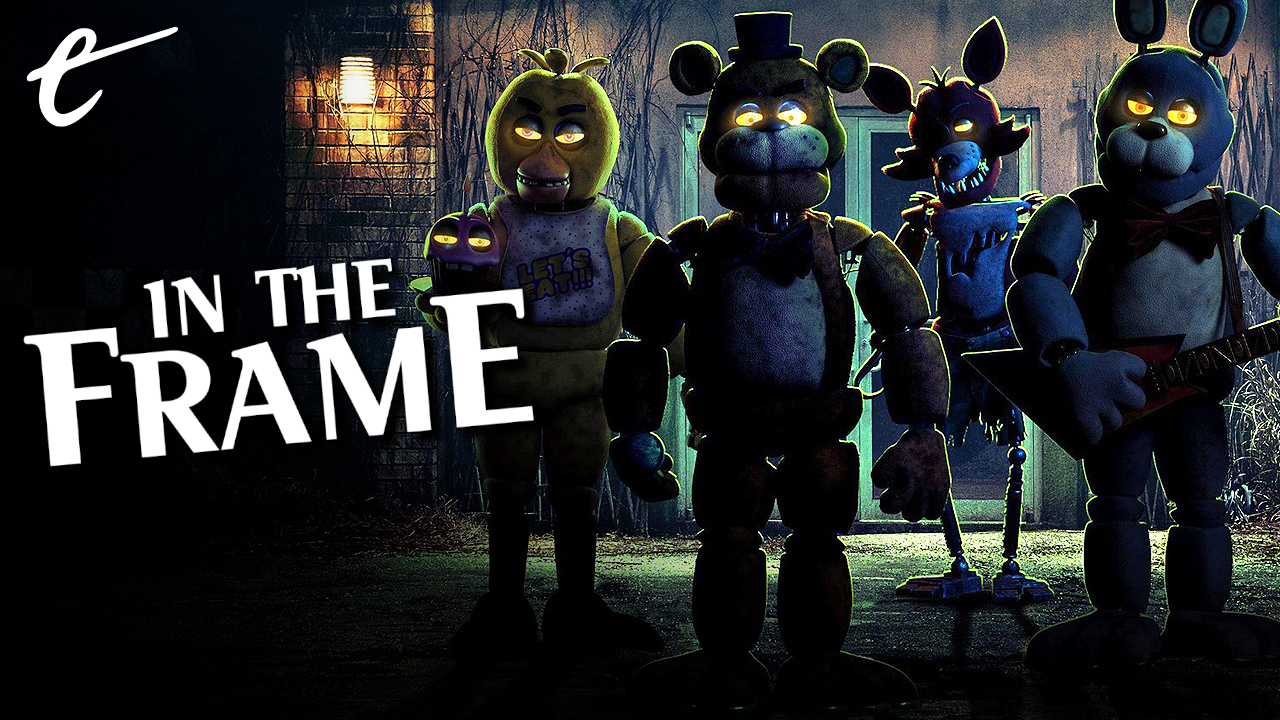Five Nights at Freddy’s is a horror movie without suspense.
There is a moment over an hour into Five Nights at Freddy’s in which Mike Schmidt (Josh Hutcherson), the new nightwatchman supervising the abandoned and dilapidated family restaurant Freddy Fazbear’s Pizza, wakes up to discover that his younger sister Abby (Piper Rubio) has left the office. He hears screams coming from the dining area. He rushes out to save his sibling, and finds her surrounded by the restaurant’s animatronic animal characters, who have seemingly come to life.
Now, this should be terrifying. It is a combination of images and ideas that at once riffs on the familiar horror trope of childish imagery turned monstrous and which is unsettlingly absurd. Certainly, nothing in Mike’s life has prepared him for the possibility that he might one day be charged with acting as a security guard at an old pizzeria populated by killer robots, let alone the revelation that those killer robots are controlled by the ghosts of murdered children.
However, Mike reacts to all this with what might be charitably described as “dull surprise.” To be fair, at least some of this is performance. Whatever strengths Hutcherson possesses as an actor, he has never been especially expressive. His breakout role was in the Hunger Games franchise, where he served as a romantic foil to Liam Hemsworth. The most unbelievable scene in Five Nights at Freddy’s is when Vanessa (Elizabeth Lail), a local police officer, notes that Mike’s pulse is racing.
That said, there is a sense in which the movie is aware of this and actively plays into it. Mike spends a not-insignificant portion of Five Nights at Freddy’s taking sleeping pills, which feels like a commentary on the movie’s lethargic pacing. The movie treats these killer animatronics in a very matter-of-fact way. It’s revealed quite early on that Vanessa has known about them for a while. Over breakfast the following morning, Mike asks, “Are they ghosts?” Abby replies, nonchalantly, “Of course.”
Horror movies are typically about suspense and build-up. The title of Five Nights at Freddy’s suggests a countdown. What happens on the first four nights? How does the tension mount? What does Mike experience and how does he rationalize it as events escalate? However, Five Nights at Freddy’s doesn’t work like that. Mike doesn’t really have any near misses with the animatronics. He walks into the dining area, and they are all standing in the open, looking at him. It’s like any other day, really.

This is a very strange approach to adapting Five Nights at Freddy’s. After all, horror is meant to be scary. Indeed, this particular kind of horror is meant to be unsettling and uncomfortable. Five Nights at Freddy’s is about taking something recognizable and familiar – classic chain restaurants and animatronic animals – and rendering it alien and monstrous. Indeed, the source video game is “famous for its jumpscares,” which makes this dull familiarity particularly weird. There’s no awe here, no wonder, no horror.
There are moments when Five Nights at Freddy’s seems to understand the power of the uncanny and the irrational. Throughout the movie, Mike is constantly slipping into a dream world disconnected from reality. While awake, he struggles to connect with Abby, who seems to communicate primarily through drawings. Doctor Lillian (Tadasay Young) explains to Mike that these images are abstractions, ways of communicating ideas in a non-verbal manner. That’s what the film should be.
It’s worth situating Five Nights at Freddy’s in a larger context. While the film is based on a video game that was itself created in reaction to the response to developer Scott Cawthon’s previous game, Chipper and Sons, it can also be situated in a wider trend of contemporary horror built around the perversion of childhood markers. The most obvious recent examples might be Winnie the Pooh: Blood and Honey or The Banana Splits Movie, but it’s a rich contemporary genre.
In particular, writers like Christopher Barkman have situated the original video game in terms of contemporary internet horror, particularly the idea of the “creepypasta.” Indeed, this idea of seemingly innocuous children’s entertainment pushed into the realm of the uncanny evokes classic creepypasta stories like Candle Cove or 1999. It’s not too difficult to imagine a version of Five Nights at Freddy’s that might have emerged from that same internet subculture.
Although creepypastas are arguably just a modern twist on the classic urban legend or ghost story, the genre reflects the internet age. It’s possible for creepypastas to expand to entire shared universes of stories, but most of them are tied to a fairly simple idea that can be easily shared and expanded or elaborated upon in any number of directions. In many cases, it’s the lack of context that makes these stories so unsettling, like a staircase standing randomly in the middle of a forest.
Of course, the fact that this vagueness is part of the appeal serves to attract fans who are specifically drawn to explain the uncanniness. There is a large online fandom that is dedicated to obsessively and thoroughly explaining Five Nights at Freddy’s, constructing elaborate theories that cobble together a cohesive internal mythology. Although controversial within the fandom, this sort of activity can be fun and involving so long as it doesn’t take things too far.

However, this sort of obsessive theorizing is exciting to hardcore fans precisely because of the lacunas in the original work. It is a process that exists separate from the work itself; as a reaction to it. It is an argument in favor of that negative narrative space, not a justification for filling it. One of the big problems with the film adaptation of Five Nights at Freddy’s is that it folds this perspective into the narrative itself, even including a cameo from prominent theorizer MatPat.
Hollywood studios have traditionally struggled to adapt internet horror. There is an obvious desire to chase that trend, given that horror audiences skew younger, but it often leads to uninspired results like Friend Request or Slenderman. There are great movies that tap into that rich vein of internet horror – that electronic folklore feeling – but they usually come from outside the studio system: We’re All Going to the World’s Fair, Skinamarink, The Empty Man, and even Talk to Me.
One of the central issues with the film adaptation of Five Nights at Freddy’s is that it is packed to the brim with lore. The movie is constantly explaining itself. It is full of backstory and exposition, all of which neatly fits together in the end. There are none of those gaps that were so enticing to fans. When the movie begins, Mike is dealing with the lingering trauma around the mysterious disappearance of his younger brother Garrett (Lucas Grant). As a result, Mike is struggling to hold down a steady job.
Through his career counselor, Steve Raglan (Matthew Lillard), Mike is offered the position at Freddy Fazbear’s Pizza. That restaurant was the site of multiple disappearances, and only remains standing because of the owner’s lingering sentimentality. While there, Mike begins dreaming more vividly of the day that his brother disappeared. He is also haunted by visions of the children who disappeared from the restaurant, as Vanessa helps him delve into the restaurant’s history.
Inevitably, everything is connected. It turns out that Steve Raglan is really William Afton, the owner of the restaurant. Afton murdered the five children at the restaurant and also abducted and murdered Garrett. “I killed your brother and now I’m going to kill you,” he boasts to Mike at the climax. “Symmetry, my friend.” Also, the reason that Vanessa knows about the child-possessed-animatronics is because she is really Afton’s daughter.
These plot decisions manage the impressive feat of being both absurdly neat and horrendously contrived. It imposes a clear structure on the movie, allowing Mike closure over his brother’s death and it ties all of the characters and events of the movie together in a bow, even if none of it makes any sense. Why is William Afton working as a career counselor under another alias? If he was a prominent businessman in the local community, surely people would recognize him as William Afton? If he can afford not to sell or demolish the restaurant, why does he need a fairly generic office job?

All of this just serves to make Five Nights at Freddy’s knowable, to beat a set of uncanny imagery and iconography into a recognizable shape. It applies a depressingly predictable narrative template to the movie, a checklist of beats that Mike needs to hit on his hero’s journey. There is nothing even remotely unfamiliar about Five Nights at Freddy’s. Indeed, the movie even goes out of its way to humanize and empathize with its monsters, turning them into cute mascots.
Five Nights at Freddy’s opens with the animatronics murdering the last nightwatchman (Ryan Reinike), implying that this has been a regular occurrence. However, most of their onscreen violence is directed at characters who can be seen to deserve it, such as Carl (Joseph Poliquin) and his gang, who trash the restaurant in an effort to get Mike fired, or Jane (Mary Stuart Masterson), who is trying to take Abby away from Mike. These monsters aren’t allowed to be monstrous.
Any violence undertaken by the killer mascots is explained as Afton’s perverse influence over them. Abby wants to befriend the animatronic animals. The film’s closing moments suggest that Mike isn’t inherently against taking Abby to visit them at some point in the future. It’s a bizarre approach to the concept. The key appeal of the concept of Five Nights at Freddy’s is the perversion of innocent childhood imagery, but the film circles back around to making that imagery cute and cuddly again.
Then again, this is perhaps the result of living in the age of intellectual property, where these movies are built around the very concept of familiarity. These films are pre-packaged. Everybody going to Five Nights at Freddy’s knows exactly what they are getting. They know each of the animatronics by name and by backstory. The naming of Lillard’s character as Afton in early press was something of a spoiler that later publicity tried to walk back. The goal with these sorts of projects isn’t to surprise or unsettle audiences, but to present them with things that they already recognize and enjoy. This limits the effectiveness of Five Nights at Freddy’s as a horror movie. Then again, it is at least true to the experience of those creepy old family eateries.
If nothing else, Five Nights at Freddy’s captures the dull familiarity of reheated chain restaurant pizza.






Published: Oct 27, 2023 11:00 am